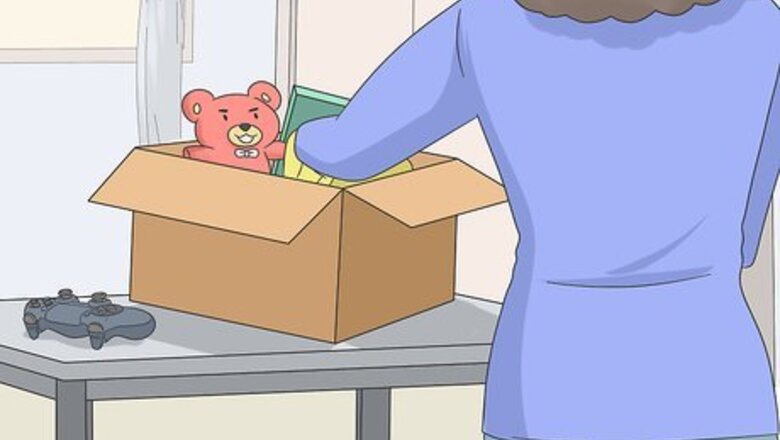
views
Preparing the Room
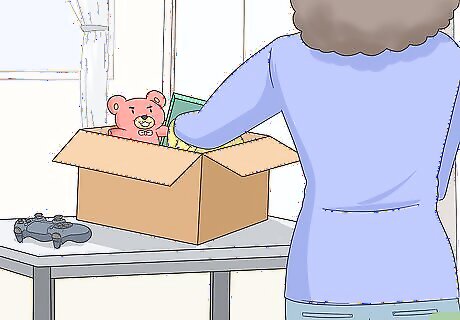
Clear any clutter out of the room. In order to make the dusting process easier and more effective, remove all of the clutter from around your house. For instance, clear off anything that's gathered on your tables or countertops, and put away loose items that have collected on the floors, sofas, and chairs. To make the job more manageable, work on one room at a time. Also, once you've finished dusting a room, don't move any items back into that room until they've been dusted, as well.
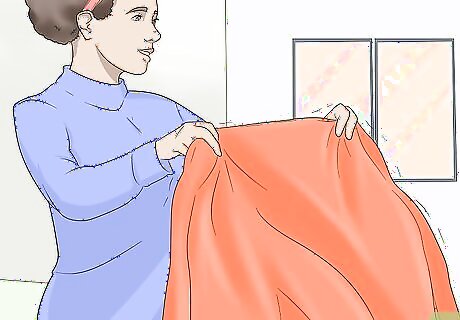
Take any fabrics in the room outside and shake them off. Before you start dusting, take any linens, pillows, rugs, or cushions outside and shake them thoroughly. This will knock loose a lot of the dust that's trapped on the soft surfaces, so you won't have as much to deal with inside. Try hitting your pillows and cushions against each other firmly to dislodge dust that might be embedded deep down. If it's been a long time since you dusted, it may still be a good idea to wash or vacuum these fabrics before you return them to the room.
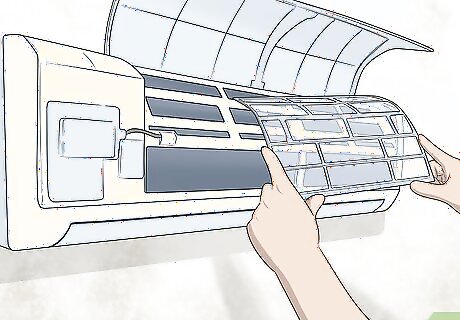
Change your vacuum and AC filters to catch airborne dust. Before you get started dusting, put a new filter in your main air conditioning vent to trap any new dust that ends up in the air. Also, clean out or replace the filter in your vacuum cleaner, if you have one. That way, your vacuum will be able to trap more of the dust you're trying to clean. Even if you're careful to trap as much dust as possible, you'll still probably send a lot of tiny particles into the air while you're dusting, which is why changing your AC filter is important. Tip: When you combine it with regular dusting, installing an air purifier with a HEPA (high-efficiency particulate air) filter may help reduce dust in your home in the future.
Cleaning the Ceilings and Walls
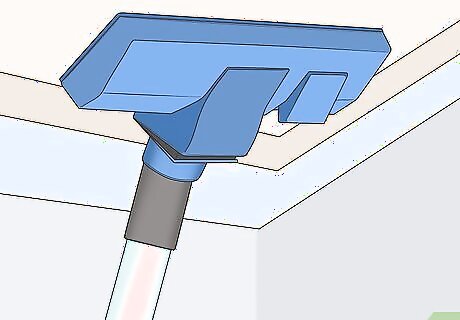
Sweep or vacuum the ceiling to remove dust. Using either a large brush attachment on your vacuum or a long-handled broom, go over the ceiling in long, smooth strokes. Work from one end of the room to the other. Even if it doesn't look dusty, your ceiling can trap small particles that will float back down into the room, especially if the ceiling is textured. If you can't reach the ceiling with your vacuum attachment or your broom, you may need to stand on a sturdy stepstool or step ladder. Be very careful when you're climbing, and only stand on a sturdy ladder or stool. Do not climb on furniture that's not intended for standing. Warning: Do not attempt to clean your ceiling if it was manufactured before the 1980s, unless you have already had it tested to ensure it doesn't contain asbestos. Tip: Always dust a room from top to bottom. As you clean, dust will fall down onto the surfaces and floors in the room, so if you clean those areas first, they'll just get dirty again.
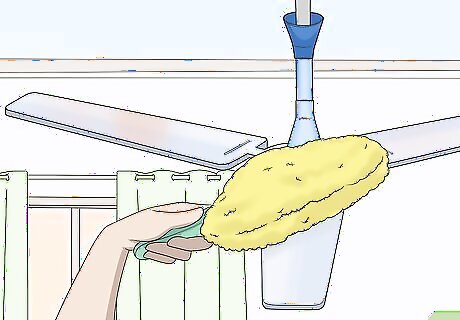
Polish any light fixtures, ceiling fans, and vents in the room. Use a microfiber duster or a clean, damp microfiber cloth to wipe down your lights, ceiling fan blades, and air vents. However, if these items are really dirty, it might be best to vacuum them before wiping them down with a cloth. Keep your cloth folded in quarters and switch to a new side whenever the side you're using gets dirty. When there are no more clean sides, grab a new cloth. Avoid using a feather duster, as these tend to just move dust around.
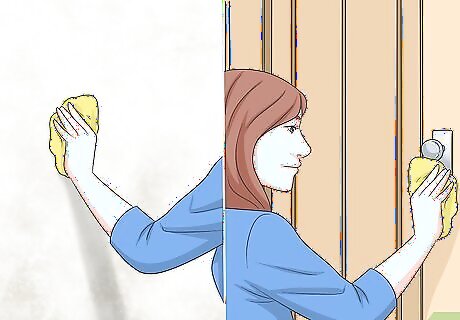
Go over the walls, doors, and door frames with a damp cloth. It might seem like a big job, but wiping down your walls will remove a lot of dust that you can't necessarily see. In addition, dust all the way around your door frames, as well as along the top, sides, and front of any doors in the room. Pay extra attention to corners and crevices in the doors, trim, or crown molding. If you'd prefer, you can use your vacuum with a brush attachment instead of a damp cloth.
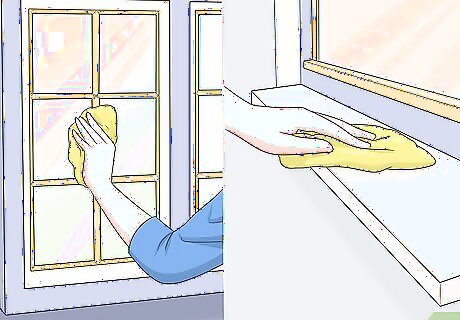
Wipe down the windows and window sills. Use a window cleaner and a clean cloth to wipe down the glass on your windows, then follow that with a squeegee if you have one to ensure you get a streak-free clean. Then, use your damp cloth or duster to clean everything around the window, including the windowsill, blinds, screens, and shutters. To make dusting your window screens easier, go over them with a large, dry paintbrush. To clean your blinds, close them tightly, then wipe them down with horizontal strokes, moving from the top of the blinds to the bottom. Then, do the same thing for the inside of the blinds.
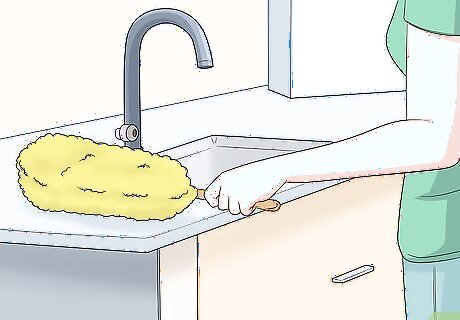
Clear off and wipe down any surfaces. If it's possible, take everything off of each shelf, table, countertop, or any other surface in the room. Wipe the dust off of the surface with your microfiber cloth or duster, then dust each item individually before you return it to its place. If you try to dust around objects instead of moving them first, it will be hard to dust as thoroughly. In addition, it will end up taking a lot longer, since you'll have to be careful not to knock the items over. Remember to clean the tops of appliances and large furniture, like your refrigerator or a tall bookcase.
Dusting Individual Items
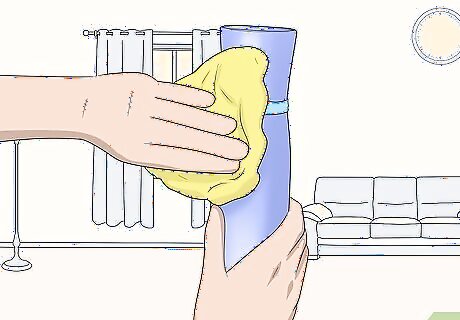
Wipe most decorative items and other objects with a microfiber cloth. Have a stack of dry microfiber cloths nearby, and dampen one or two of them. If you're dusting an item that's okay to get wet, like a ceramic vase, wipe it down with the damp microfiber cloth. When you're dusting things that can't get wet, like books, leather items, or other delicate objects, use one of the dry cloths, instead. Be sure to wipe down the leaves of all of your houseplants with a damp cloth. When dust builds up on your plants, it blocks the pores on the leaves, so they can't filter CO2 out of the air as effectively.
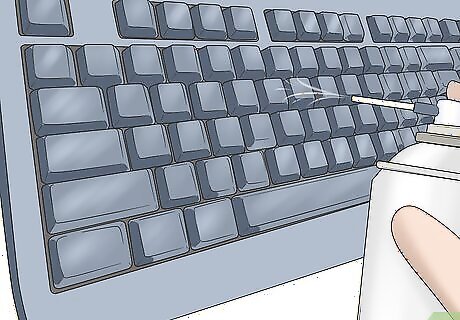
Get dust out of electronics with compressed air and a vacuum. Wipe down the outside of your electronics with a dry cloth, then use a brush attachment on your vacuum to suck up any dust that's gathered around vents or the power cord. Finally, use a can of compressed air to blow out any dust or other debris from small crevices, like between the keys on your computer keyboard. Always unplug any device before you clean it. Wipe down electronic screens, including your television, with a dry microfiber cloth or a dryer sheet. The dryer sheet will help dispel static electricity that can make it hard to remove dust.
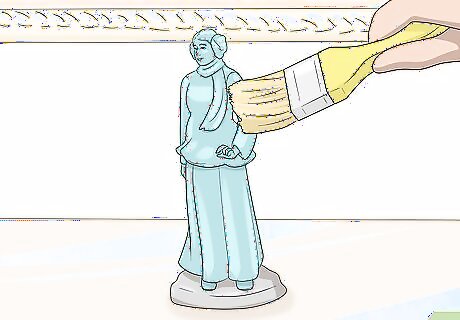
Sweep dust from crevices and small, fragile objects with a dry brush. If you have small figurines, decor with elaborate carvings or molding, or anything else that's difficult to wipe down, carefully go over them with a dry paintbrush. Use the corner of the brush to get the bristles into any crevices that would be hard to reach with just a cloth. If you used a paintbrush to clean your window screens, you can use that one here! Just use your hand to brush away any dust that might be left on the bristles.
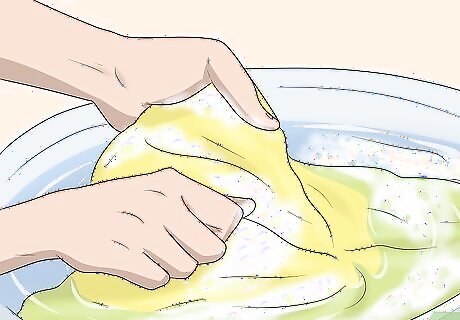
Wash linens and soft toys. If it's possible, wash any bedding, curtains, plush toys, slipcovers, or other fabric items that are machine washable. These soft surfaces can hold onto a lot of dust, and putting them through the wash will remove a lot of that. Vacuum your curtains with your brush attachment if you can't wash them. Tumble-dry the linens in your dryer or hang them to air dry. However, wait to replace them until you've finished dusting the rest of the room. Otherwise, they might collect more dust as you clean.
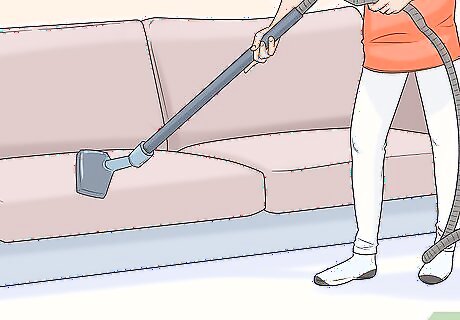
Vacuum any upholstered furniture in the room. If you have any plush chairs, couches, mattresses, or other upholstered items in the room that you can't easily wash, go over the surfaces with the brush attachment on your vacuum. Be sure to especially get down into any crevices where dust can hide. Remember to remove any cushions from the furniture and vacuum underneath those, as well.
Finishing the Room
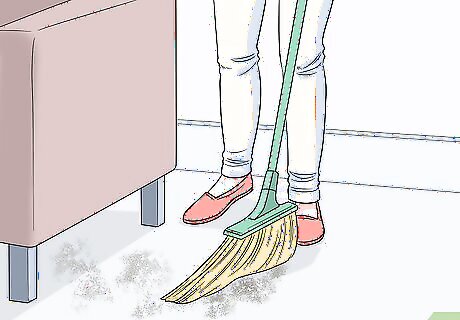
Move the furniture and appliances and clean underneath them. Now that you've done all this work to clean an entire room, don't leave dust bunnies lurking under your furniture. If you can, slide the furniture out of the way and vacuum or sweep underneath it. If not, use an extension arm on your vacuum and clean as far underneath each piece as you're able. It may help to have another person available if you have a lot of heavy furniture.
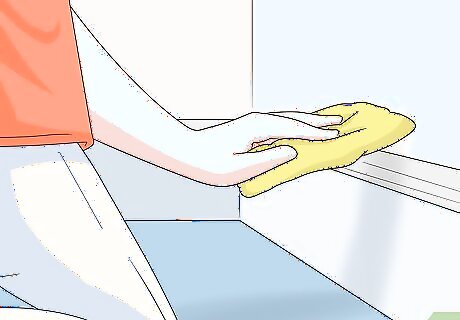
Wipe down the baseboards. Chances are, dust will have settled along the trim at the bottom of your walls. To remove that dust, go over the baseboards with a damp microfiber cloth, working all the way around the room. If the baseboards are really dirty, spray a cloth with an all-purpose cleaner and wipe them down with that. Tip: Use a melamine foam magic eraser to easily remove any scuff marks on the baseboards.
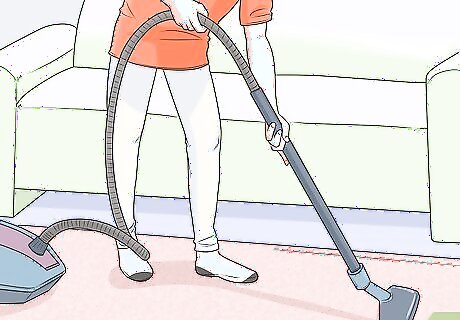
Clean carpets and rugs with a vacuum. Even if you've already shaken out the rugs, there may still be dust embedded deep in the fibers. Also, any carpets in the room will need to be vacuumed thoroughly to remove any dust that fell while you were cleaning. You can sweep your carpets and rugs if you don't have a vacuum, but this will not be as effective at removing dust.
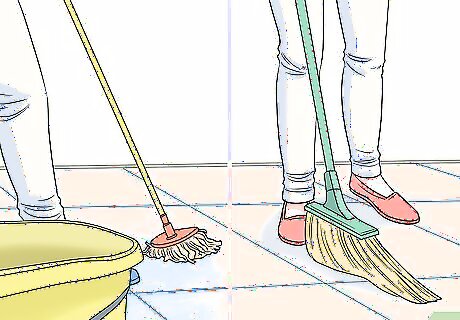
Sweep and mop hard floors. To avoid stirring dust back into the air, gently go over the floors with a broom. Then, mop the floors to pick up any dust that's been left behind. As the name suggests, a dust mop is best for this task, since there's more surface area to trap dust. However, you can use any mop that you have available.
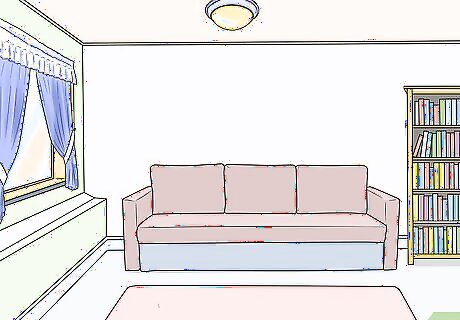
Return everything to its place. Now that you've cleaned your room from top to bottom, the only thing left to do is to put everything back in order. Move any furniture back into its place, replace your rugs, curtains, and other linens, and place small objects back onto their shelves. Continue this process for each room in your home. Then, sit back and enjoy your dust-free environment!




















Comments
0 comment